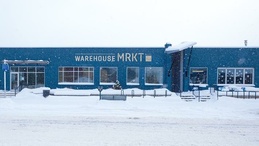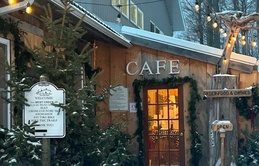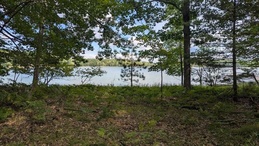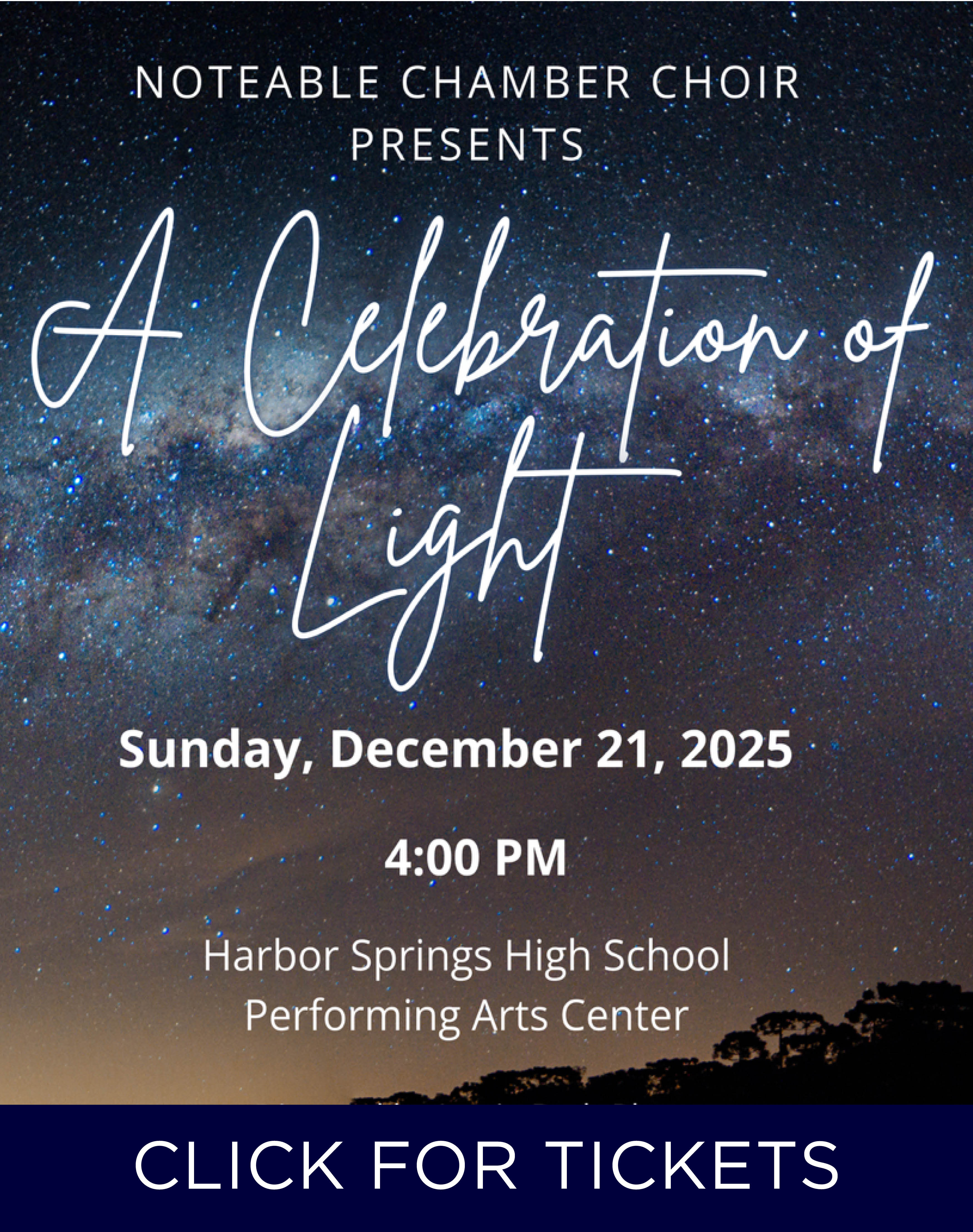
Your Guide to Sleeping Bear Dunes Camping: Seven Sites to Explore
See the beauty of the National Lakeshore from the mainland and the Manitous
By Drew VanDrie | June 22, 2024
Summer in the northern latitudes wouldn’t be complete without at least one camping trip. Indulging in some rustic relaxation and living an unhurried existence (for at least a few days), offers a restorative escape.
It’s no surprise that Sleeping Bear Dunes National Lakeshore (SBDNL) is a popular destination for those with a knack to bivouac. Catering to all ranges of preference from the self-reliance of backpacking to the comfort of RVs, the park has something to suit everyone’s expectations. Aided by insights from Merrith Baughman, director of interpretation and visitor services at the Lakeshore, we’re here to help you set up camp!
There’s always something new to discover, even for an experienced former park ranger and Sleeping Bear steward like Baughman. “I’ve been at this park for 11 years now,” she says, “and I feel like I’m still learning things and still seeing new places. That’s the thrill of the park. There’s so much to see and do.”
Read on for campsite overviews—plus dos and don’ts of the dunes—to learn how you can make roughing it in Sleeping Bear a smooth outing.
Platte River Campground
5685 Lake Michigan Rd, Honor
Located off of M-22, Platte River Campground is a bustling location. Housing 179 campsites, 96 electrical hook-ups, and open to all manners of camping from tents to RVs (max length of 40 feet), the Platte is the most accessible option for those looking for comfort and convenience while camping. “[The] most amenities are going to be found at Platte River Campground,” says Baughman.
Replete with running-water restrooms, showers, potable water and refill spigots throughout the park, and a sanitation (dump) station for RVs, the Platte is classified as a developed campground. It also offers eight wheelchair accessible sites purposefully located near water, restrooms, and showers. The Platte even features firepits throughout the sites and sells firewood at the campground, so guests can nestle up to a nighty fire (provided there’s no burn ban).
Beyond some convenience and enlarged capacity, the Platte River Campground has some surprising seclusion as well. Located in the northwestern corner of the campground is an outpost of nearly two dozen sites that are walk-in only and perfect for campers who “maybe don’t want to backpack, but maybe want to get a little bit farther away from people,” according to Baughman.
And while the namesake nearby river may be popular for tubing, and the Picnic Area and beach at the lakefront idyllic, Baughman says the biggest highlight is the network of trail systems within and near the campground.
“The Platte Plains trail is 14 miles in length,” says Baughman, “You can do some really nice day hikes…you can get out into those areas by yourself, have some solitude, and have access to stretches of beaches that are generally less busy.”
D.H. Day Campground
8000 W. Harbor Hwy, Glen Arbor
D.H. Day is a wooded haven centrally located near some of Sleeping Bear’s most popular attractions including the Dune Climb, Pierce Stocking Scenic Drive, and Alligator Hill, with access to dazzling Lake Michigan nearby.
Outfitted with 87 sites, the campground is more rustic than the Platte, but does include water spigots, vault toilets, fire rings (and wood for sale), and a sanitation station for RVs. Take note: There are no showers. (Perhaps a dip in Lake Michigan?) And while still open to RVs (max length of 35 feet) the campground does not provide any electrical hook-ups.
Campers should also be aware that the D.H. Day Group Campground is at another location, to the west near Glen Haven on Harwood Rd. Guests of group sites should still check in at the main D.H. Day location first.
In addition to its ideal location, the multi-use Heritage Trail, which skirts by the campground, is a major boon for visitors of D.H. Day.
“People can bring their bikes and hop on the Heritage Trail and they can get into Glen Haven,” says Baughman, “They can peddle into or even walk into Glen Arbor… It’s a great way to be more ‘green,’ and see the park.”
The trail also expands access for those with restrictions. “The Heritage Trail is fully accessible so if someone has lesser mobility or mobility challenges, they can use the trail [to better access the park],” she says.
Starting at the end of June, campers can also attend ranger-led evening programs at the D.H. Day and Platte River Campground amphitheaters. “Our ranger programs are a lot of fun,” says Baughman, “They harken back to those traditional, sit around the campfire and talk to a ranger type of program.” Family friendly and highly interactive, featuring activities and storytelling, the programs are held throughout the summer, with scheduling posted at each campground.
White Pine Backcountry Campground
Benzie County
White Pines Backcountry Campground is a great site for novice and intermediate backpackers. Planted within the Platte Plains trail system, but reached by a modest 2-mile hike, White Pine is an approachable option for those newer to backcountry camping.
In addition to six established sites, the campground also features food storage boxes, a community fire ring, and a vault toilet, (a true luxury in the backcountry), meaning campers don’t have to get the “full experience” right away. Venturers should note that pets are not permitted and there is no available potable water, so guests will need to bring water filtration systems to acquire water from Lake Michigan.
“It’s still pretty close to the lake,” says Baughman. “It still has some amenities—it has a pit toilet, it’s maintained and in good condition. It’s backpacking, but it’s pretty accessible backpacking.”
The campground itself is located within the Designated Wilderness portion of the Sleeping Bear Lakeshore, and visitors are advised to adhere to the principles of “Leave No Trace” to minimize impact on the landscape. Along with a general National Parks Entrance Pass, overnight campers will need to purchase a Backcountry Use Pass.
South Manitou Island
One of the two cubs of Sleeping Bear lore, South Manitou Island resides in the middle of Lake Michigan 16 miles from the mainland. Accessible by the ferry from the Manitou Island Transit located in Leland (or private boat), South Manitou is a world all its own, boasting plenty of sightseeing, miles of pebbled beach, and ample historical intrigue.
Besides a pump within the village, there is no other potable water, so guests will need their own filtration devices for water supply. Open to overnight camping at three campgrounds (dispersed camping is not permitted), and also available for day treks (guests can book a day trip pass with Manitou Island Transit), South Manitou is ideal for those seeking isolation and campers looking to set their own terms for exploration. Campsites are currently first-come, first-serve, but Baughman hints it may change to a reservation system in the future.
Here again, a Backcountry Use Pass is required prior to departing from the island. These can be purchased at the Philip A. Hart Visitors Center, a Sleeping Bear campground office, or from the Leland dock. Campers will then complete registration with a ranger once they arrive at the island dock.
“The thing about South,” says Baughman, “there’s just so many layers of history you can encounter. Plus it’s really unique ecologically. There’ve been no deer on the island, and ecologically it’s just really different than the mainland.”
And don’t forget the beaches, she adds. “Just going out there, hiking the island, and getting all sweaty and then dipping in the lake—there’s nothing like it!’
All campers must reside within one of the three campgrounds below and carry out all trash or equipment they carry in. Laced with a network of trail systems, South Manitou is a hiker’s paradise offering plenty of scenic views and solitary beaches to enjoy.
Bay Campground
The Bay Campground is nearest to the dock and offers 28 total sites, with three designated group sites that must be reserved in advance. Due to its proximity to the dock and beach, it is often the most popular and fills up quickly. The campground offers two vault toilets along with several communal fire rings—any scavenged firewood should be from dead and downed trees.
Weather Station Campground
Perched atop a bluff on the island’s south side, the Weather Station sites look out toward the Manitou Passage and mainland beyond. The campground features 20 individual sites with three group locations, two vault toilets, and dispersed group fire rings. Situated within the woods on the shore edge, the Weather Station is near the lighthouse, Lake Florence (the island's interior lake), the shipwreck Morazan, and the old growth Giant Cedars.
Popple Campground
Those willing to put in a bit more legwork can seek seclusion at the Popple Campground. Set 3.5 miles from the ranger station on the north end of the island, the Popple provides seven individual sites and a single vault toilet. The sparse and sequestered campground offers spectacular views of North Manitou and unrivaled access to the beach. However, no fires are permitted.
North Manitou Island
North Manitou is regarded as the last rugged frontier for Sleeping Bear Dunes camping. Also accessed by the Manitou Island Transit ferry (or private boat), visitors to North are expected to remain overnight, as departure dates and times are scheduled into ticket booking. More rustic in offerings than even South Manitou, the island is intended for more experienced backpackers.
Approximately 15,000 acres (South is about 5,200 for comparison), North is an exploration into untamed, thriving wilderness full of towering forests, desolate dunescapes, and massive stretches of isolated lakeshore. Home to a thriving deer population (enough to warrant its own special hunting season), it’s not uncommon to see a few grazing or slipping through the woods as you traverse the island.
“North is really that true backpacking experience,” says Baughman. “The ferry drops you off, you get on the island, and you just go. [You can go] south toward Dimmicks Point, north up toward these amazing kettles and potholes, and the views are incredible. I bet you could backpack and not see anybody once you’re away from the village.”
While there is a village campground with eight first-come, first-serve sites, the vast majority is dispersed, backcountry camping. Fires are also prohibited on the island, except for designated rings at the campground. And besides a village water pump, once in the backcountry, hikers will need to filter their own drinking water. Due to the sensitive and unspoiled nature of North Manitou, visitors are expected to strictly adhere to “Leave No Trace” practices along with observing required distances from lakeshores, trails, and protected areas.
“We are really counting on people to leave no trace,” says Baughman. “We do get enough people out there that if people don’t practice that, it’s not going to be a very nice experience for the next people.”
Dos and Don’ts of the Dunes
No matter where you’re camping this summer, keep these best practices in mind.
Fire Safety and Firewood: Fires are only permitted within designated fire rings at campsites. Extinguish all fires and coals with water before departing, and never leave a fire unattended. If in the backcountry campgrounds, use only dead and downed wood for fires. If within a campground, purchase wood at either the campground or a nearby approved local vendor.
Leave No Trace: Leave all natural areas and campsites better than you found it. Be a conscientious and considerate camper and follow the seven steps of Leave No Trace: 1) plan ahead and prepare; 2) travel and camp on durable surfaces; 3) dispose of waste properly; 4) leave what you find; 5) minimize campfire impacts; 6) respect wildlife; 7) be considerate of other visitors.
Respect Protected Areas: Some areas of the Sleeping Bear Dunes are off limits to the public, such as historical buildings, ecologically sensitive areas, and piping plover nesting grounds. “We do have [the piping plover nests] marked off,” says Baughman. “If you see signs that say ‘Closed,’ please respect that. It really is important and critical if we want this species to exist.”
Pest Control: Preventing the spread of invasive species is a full-time objective for the parks, and campers can assist in the mission. From washing and sanitizing watercraft and camping gear, to using boot brushes provided at trailheads to dislodge unwanted hitchhikers, you can reduce the spread of unwanted pests. Campers should also educate themselves on tick prevention as they are present in the park. Along with leg gaiters and permethrin treatments, Baughman advocates visitors to “Check! Check every night!” for ticks.
Reservations: He who hesitates is lost! Sleeping Bear campgrounds are popular and fill up quickly. Campers are encouraged to reserve sites on recreation.gov as soon as possible, typically at least six months in advance. If spots are booked, Baughman encourages campers to keep checking the website, as there are occasional cancellations that free up a spot.
Trending

Farm to Glass with Ethanology
When Elk Rapids distillery Ethanology committed to locally-sourced ingredients for their products, it seemed like they&rsquo… Read More >>
MRKT HLDY SHPPNG, aka Warehouse MRKT Holiday Shopping!
Shop the latest from local makers and vendors at the Holiday MRKT Share at Warehouse MRKT in TC, Saturday, Dec. 20, from 10a… Read More >>
Men and Ugly Sweaters
Those two things don’t always go together, but on Dec. 19, you’ll see both out and about in Petoskey and Harbor … Read More >>


